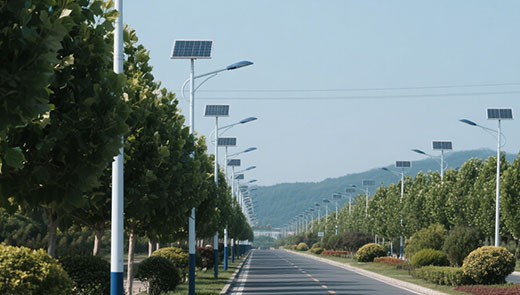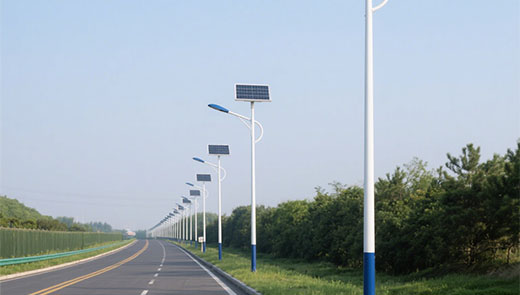The Advantages of Solar Street Lights for the Environment
Nov 11, 2024
Solar street lights provide an eco-friendly alternative to traditional street lighting, offering significant benefits for both the environment and the communities they serve. Powered by solar panels, they operate independently of the grid and harness renewable energy, reducing carbon emissions and minimizing pollution. Here’s an in-depth look at how solar street lights benefit the environment:
1. Reduced Carbon Emissions
- Traditional street lights are usually connected to the electrical grid, relying on fossil fuels to power their illumination. Solar street lights, however, derive energy from the sun, which is a clean, renewable energy source. By switching to solar street lights, municipalities can significantly cut their carbon emissions, helping to combat climate change.
2. Energy Independence and Renewable Energy Use
- Solar led street lights operate independently of the electrical grid, which reduces demand on fossil-fuel-based power sources. This independence supports renewable energy use and enhances energy resilience by reducing reliance on centralized power systems.
3. Reduced Light Pollution
- Many solar street lights are equipped with LED bulbs and smart control features, allowing for directed lighting that minimizes unnecessary light spillage. Additionally, their automatic on/off sensors reduce excess lighting during non-peak hours, helping to limit light pollution that can disrupt local ecosystems and nocturnal wildlife.
4. Minimal Environmental Disruption During Installation
- The installation of traditional street lights requires extensive trenching and wiring, disrupting the ground and potentially impacting local habitats. Solar outdoor lights, on the other hand, require minimal installation as they are stand-alone systems, causing less ground disturbance and making them an eco-friendly choice for urban and rural areas alike.
5. Long-Lasting LED Lighting
- Solar street lights often use LED technology, which is highly energy-efficient and durable. LEDs last longer than traditional incandescent or halogen bulbs, requiring fewer replacements and reducing waste. This not only saves energy but also decreases the environmental impact associated with frequent bulb manufacturing and disposal.
6. No Hazardous Waste or Pollution
- Solar road lights do not produce hazardous emissions or waste. Traditional street lights often rely on materials that contain harmful chemicals or heavy metals. Solar lights, however, avoid these materials, which minimizes environmental pollution and the risk of hazardous waste.
7. Sustainable Lighting for Remote and Sensitive Areas
- Solar street lights are ideal for remote or ecologically sensitive locations where access to electrical infrastructure is limited, or where environmental impact is a concern. By using renewable solar power, they provide reliable lighting in areas that need it without the environmental footprint of traditional grid-based lights.
8. Reduced Maintenance and Waste
- Solar street lights have fewer moving parts and often come with weather-resistant designs, requiring less maintenance. As they are generally self-sustaining, there’s also less need for infrastructure maintenance and replacements, further minimizing waste and energy use.






